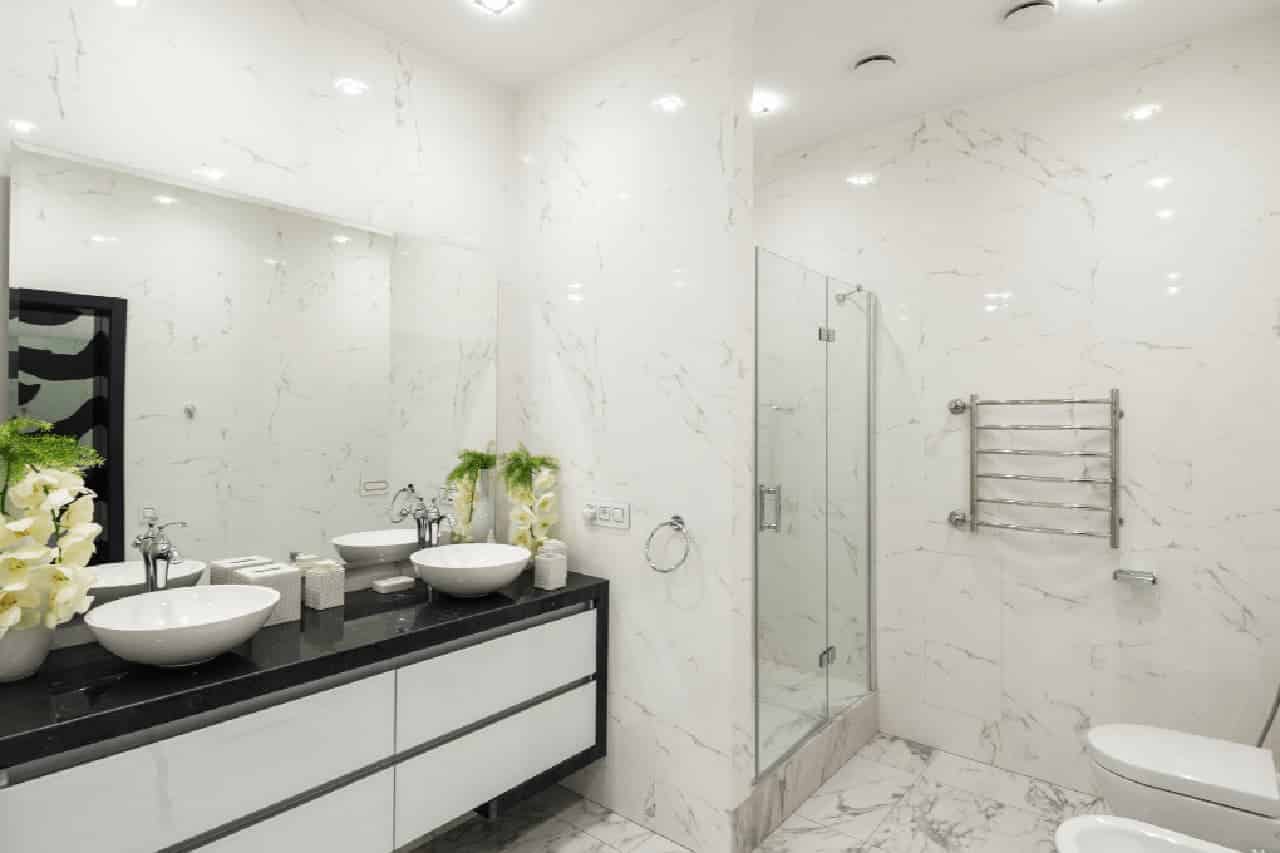Transforming a bathtub to shower setup can dramatically improve both the functionality and aesthetics of a bathroom. For homeowners aiming to convert a tub into a walk-in shower, understanding the real budget requirements is essential. A well-planned shower conversion project not only enhances accessibility but also adds long-term value to your home. This guide breaks down the main expenses, from demolition to finishing touches, so you can plan with confidence.
Why Convert a Tub to a Walk-In Shower
Upgrading from a tub to a walk-in shower is a popular choice among homeowners seeking comfort, safety, and style. The decision often stems from a desire to simplify daily routines, eliminate the high step of a tub, and modernize the space. Replacing it with a shower can create a more open shower area, provide frameless shower doors for a sleek look, and make cleaning easier.
For households with only one tub, this type of renovation should be carefully considered, as it impacts both personal convenience and potential resale preferences.
Understanding Tub to Shower Conversion Costs
When evaluating the tub to shower conversion cost, there’s no single answer. Prices vary widely based on location, labour rates, and the type of conversion you choose. The average tub to shower conversion in Canada often falls within a broad range because the cost of removing the tub, plumbing work, and new materials can differ significantly.
The average cost to convert a tub into a walk-in shower may range from mid-budget solutions with a prefab shower stall to high-end custom builds. Knowing these variations helps you anticipate what your project may cost before you commit.
Main Cost Factors in a Tub-to-Shower Conversion
Several elements influence the total shower conversion project cost, and understanding them is crucial for accurate budgeting.
Shower size and layout changes
Larger shower areas require more tile, waterproofing, and sometimes structural changes. Costs can increase depending on the shower size and the complexity of the space.
Shower type: prefab shower stall vs tiled walk-in
A prefab shower stall with an acrylic shower or prefabricated shower pan is usually more affordable. In contrast, tub to a tiled shower conversions with custom stone or ceramic can be pricier, especially when opting for luxury finishes.
Materials and finishes
From framed shower enclosures to frameless shower doors, materials greatly affect your budget. Flooring options, wall tiles, and waterproof membranes all contribute to final shower stall costs.
Plumbing and waterproofing work
If you’re replacing it with a shower in a different location, plumbing changes can raise expenses. Even a direct swap may require pipe adjustments or a new drain placement.
Labour and demolition
Tub removal and preparing the area for the shower you want will impact costs. Demolition and proper disposal are necessary before the rebuild can begin.
Ways to Save on Tub-to-Shower Conversion
Reducing your budget doesn’t mean sacrificing quality. By making smart decisions, you can save on tub-to-shower conversion expenses while still achieving your desired look.
- Keep the existing plumbing layout to avoid costly rerouting
- Choose a prefab shower stall instead of a fully tiled option
- Combine your shower remodel with other upgrades to reduce labour costs
A cost-effective alternative: Secur O Bain’s bath lift chair
A full tub to shower conversion isn’t always the only way to improve safety and accessibility. A bath lift chair offers a budget-friendly solution while letting you keep your existing tub.
Key advantages include:
- Significant cost savings compared to demolition, plumbing changes, and tiling
- Enhanced safety and comfort with a sturdy stainless-steel frame, high weight capacity, and waterproof controls
- Quick installation in just a few hours, with no permanent bathroom modifications
This option is ideal for those who enjoy bathing and want to avoid the higher tiled walk-in shower costs or lengthy remodel timelines.

Comparing Tub to Shower Conversion Options
The shower style and materials you select will influence both cost and long-term satisfaction.
Bathtub to shower vs tub with a shower stall
Some homeowners opt for a tub with a shower stall to maintain flexibility, particularly in homes with children or guests.
Walk-in shower vs tiled walk-in shower
A fully tiled walk-in offers a custom look but can come with higher tiled walk-in shower costs. A prefabricated shower pan provides a cost-effective, easy-to-install alternative.
Framed vs frameless enclosures
While a framed shower is budget-friendly, frameless shower doors give a modern, open feel, albeit at a higher price.
Getting Accurate Cost Data for Your Project
Before starting, obtain multiple quotes from reputable contractors. The cost to convert your tub will depend on your chosen materials, design, and local labour rates. Clear communication about the shower style you want will help ensure accurate estimates.
Final Checklist Before You Convert Your Tub
Before finalizing your decision to convert your tub, review these points to ensure a smooth renovation:
- Confirm whether you need a tub removal permit in your municipality
- Decide if you prefer a prefab shower stall or a custom tub to a tiled shower
- Factor in accessibility needs, such as a wider entry for wheelchair access or slip-resistant flooring
- Ensure you have budgeted for both labour and material variations depending on shower type
A successful tub to shower conversion blends thoughtful planning with a clear understanding of all cost factors. Whether you choose a simple acrylic shower or a custom-tiled masterpiece, your investment should create a functional, beautiful space that fits your lifestyle and enhances your home’s value.

